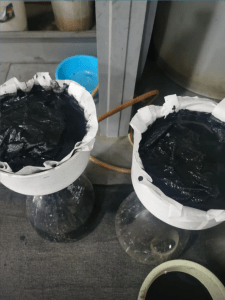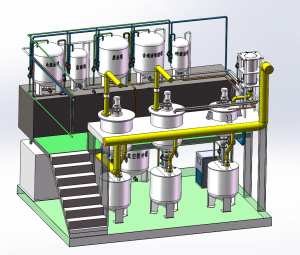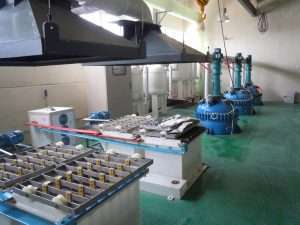Call us now:
Refining silver with nitric acid is a common method used to purify silver and remove impurities. The process involves the dissolution of impurities in nitric acid while leaving behind the silver.
Here is a step-by-step guide on how to refine silver with nitric acid:
Safety precautions: Ensure you are working in a well-ventilated area and wear appropriate safety equipment, including gloves, goggles, and a lab coat. Nitric acid is highly corrosive, so exercise caution.
Equipment and materials: Gather the necessary equipment and materials, including silver to be refined, concentrated nitric acid (typically 70%), a glass or plastic container, a stirring rod, a heat source (such as a hot plate or Bunsen burner), and distilled water.
Dissolving the silver: Place the silver into the glass or plastic container and pour enough nitric acid over it to completely submerge the silver. The reaction between the silver and nitric acid produces silver nitrate and oxides of nitrogen. The reaction is exothermic and may release toxic gases, so it's important to be cautious.
Stirring and heating: Stir the mixture gently to ensure even contact between the silver and nitric acid. If necessary, apply gentle heat using a hot plate or Bunsen burner to speed up the reaction. However, avoid excessive heat, as it can cause the solution to boil violently.
Reaction completion: The nitric acid will gradually dissolve the impurities, forming a solution of silver nitrate. Once the reaction is complete, the solution should appear clear or light blue, indicating that most impurities have been removed.
Filtering: Allow the solution to cool down, and then filter it using a filter paper or funnel to remove any solid impurities or undissolved particles. This step helps ensure a purer silver nitrate solution.
Precipitating the silver: To obtain solid silver from the silver nitrate solution, add a reducing agent such as metallic copper or sodium chloride (common salt) solution to precipitate the silver as a solid. The reaction will form insoluble silver chloride or metallic silver, depending on the reducing agent used.
Collecting the silver: Filter the precipitated silver using a filter paper, rinse it with distilled water to remove any residual impurities, and then allow it to dry. You can also melt the collected silver using appropriate equipment to obtain a more refined form.
It's important to note that refining silver with nitric acid can be a hazardous process and requires proper knowledge and safety precautions. If you are not experienced with chemical processes, it is advisable to seek guidance from a professional or an expert in the field.
Certainly! Here are a few additional steps you can follow to continue the silver refining process after precipitating the silver:
Washing the precipitate: After collecting the precipitated silver, wash it with distilled water to remove any remaining impurities or traces of the reducing agent. Repeat the washing process a few times to ensure thorough cleaning.
Drying the silver: Allow the washed silver to dry completely. You can use a clean, dry cloth or paper towels to gently pat it dry, or you can let it air dry naturally. Ensure that the silver is completely dry before proceeding to the next step.
Melting the silver: Once the silver is dry, you can melt it to obtain a more refined form. Use appropriate equipment such as a crucible or melting dish and a heat source like a torch or furnace. Melt the silver at a controlled temperature to avoid any loss or oxidation.
Casting or molding: Once the silver is molten, you can pour it into a prepared mold or cast it into a desired shape. This step allows you to obtain silver bars, ingots, or other forms that are easier to handle and store.
Annealing and cooling: After casting, it's recommended to anneal the silver to relieve any internal stress and improve its ductility. Annealing involves heating the silver to a specific temperature and allowing it to cool slowly. Consult a metallurgy resource or professional for the appropriate annealing temperature and process for silver.
Further refining (optional): Depending on your desired level of purity, you may choose to further refine the silver through additional processes such as electrolysis or cupellation. These methods can help remove trace impurities and achieve higher levels of purity.
Remember to always exercise caution and adhere to safety guidelines throughout the refining process. Proper disposal of chemical waste and following local regulations is essential. If you are unsure about any step or lack experience in handling chemicals, it's recommended to seek assistance from professionals or experts in the field.


